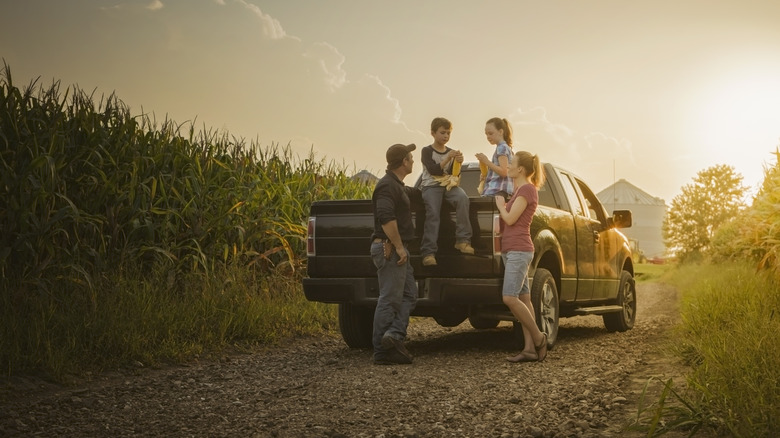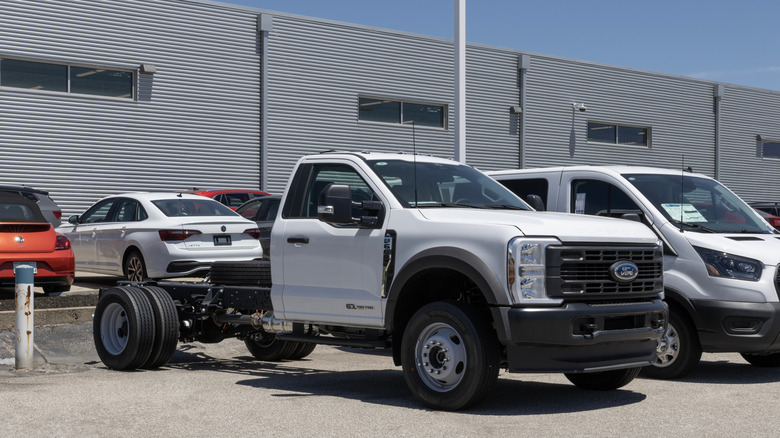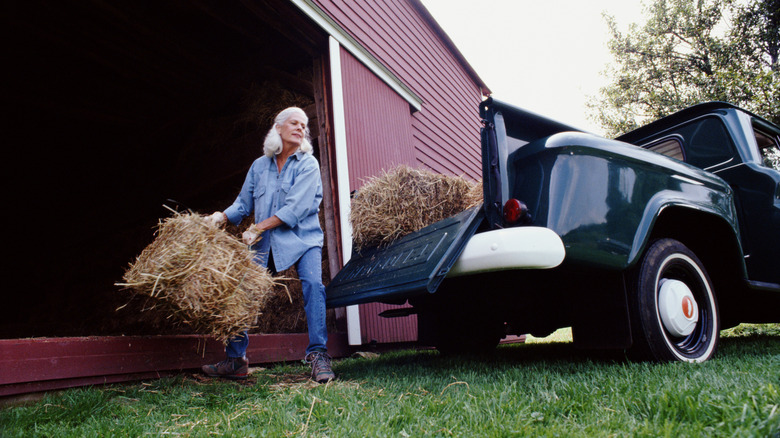What Does SRW Mean On A Truck And How Is It Different From DRW?
In the past few years, Americans have been steadily opting for trucks as their preferred type of vehicle. Whether it's for personal or professional use, trucks offer more flexibility in terms of what it can carry. Unlike cars that are designed to fit only a certain amount of volume inside its trunk (and maybe even some of the seats), trucks can handle everything from odd-sized furniture to an entire trailer's worth of construction materials, or even full-on living quarters. However, choosing the right model for your needs can be tricky, especially for first-time truck owners. These days, there are so many must-have features new trucks can offer. In your search for the perfect pickup, you may have come across the term SRW thrown around. But what does it actually mean?
SRW stands for single rear wheel, which can be attributed to the fact that it uses a single wheel on each side of the rear axle. Similar to cars, this means the truck will have a total of four wheels: two in the front and two in the back. Typically, this is the most common type of truck you're likely to encounter on the road, but it is not the only option out there. If you're looking for a pickup that can manage a rougher lifestyle, there is another configuration that may be better suited to your needs: the DRW. Here's what DRW means, how it's different from an SRW, and how to decide if it's the right truck type you should invest in.
How are SRW and DRW trucks different?
Unlike an SRW, dual rear wheel (DRW) trucks have four wheels in the back of the vehicle, bringing the total number of wheels to six. Sometimes referred to as "dually" setup, the extra wheels create better overall stability, allowing the truck to withstand heavier payloads and tow more weight than its SRW counterpart.
According to Ford, which offers both configurations in its pickup arsenal, the difference between the two's capabilities can be pretty significant. For example, it shares that the average max towing capacity for its SRW units is 16,250 pounds. In comparison, you can expect DRW models to handle a whopping 11,250 pounds more than an SRW for an average of 27,500 pounds, with the DRW version of the F-450 capable of towing up to a crazy 35,000 pounds. The average max payload capacity for a DRW is also 56% higher than an SRW.
In terms of budget, SRW trucks generally have lower maintenance costs, simply because there are fewer tires to worry about. After all, maintaining the health of your tires for the entirety of your car's life is crucial to everything from managing fuel consumption to your overall safety. But how do you know which truck is right for you? When it comes to which type of truck should be added to your garage, there are a few things you should consider.
SRW vs. DRW: Which one should you get?
Before we begin, it's important to note that SRWs are generally easier to find. This means you're more likely to have a broader range of SRW options in terms of budget, especially in the secondhand market. Second, you'll need to evaluate your lifestyle and what you plan to carry with your truck. For example, if you're using your truck professionally, you may want the extra power that DRWs have, especially if you're thinking of serving clientele that have varying payload demands. But, if you're just using it for personal needs, like occasionally helping friends move furniture, an SRW can work well enough.
Third, consider if you're going to use the truck for towing. If so, a DRW may be a better choice. You'll also need some essential towing accessories; for example, if you're planning to attach a tiny home or a camping trailer, you will need to invest in a hitch, such as a gooseneck hitch or 5th wheel hitch. Plus, if you're bringing your whole life with you on the road, the stability of a DRW can be a welcome trait, especially if you're planning to travel through areas with difficult terrain or bad weather.
Keep in mind that you'll need to check your parking options. Due to the extra wheels, a DRW has a wider track width, which can pose problems if you live in a city with tight roads, limited parking spaces, or small garage areas. Once you've decided your preferred truck configuration, you might want to check out our list of fuel efficient pickups for your consideration.


